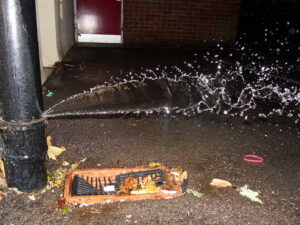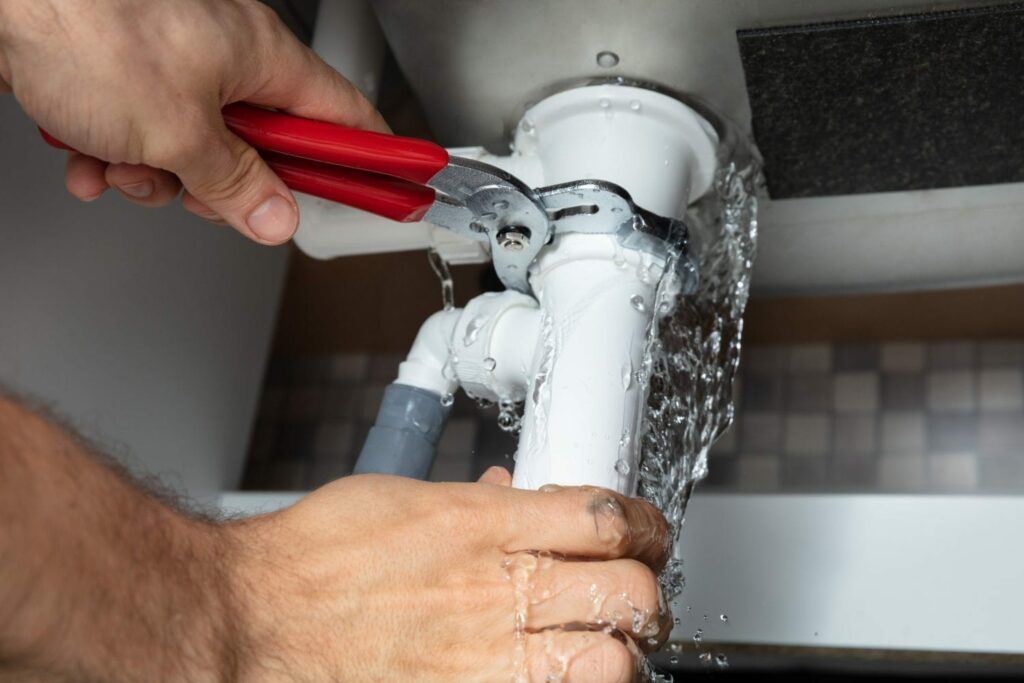Spotting a Burst Pipe and Swiftly Executing Proper Repairs
Spotting a Burst Pipe and Swiftly Executing Proper Repairs
Blog Article
Just how do you really feel in relation to How to Install and Connect a New Dishwasher?

A burst pipe is a significant emergency; you can only stand as you view water you pay dearly to reunite with the earth. In worse cases, you observe a pool on your kitchen flooring, which is a terrific trip hazard, particularly if you have children around. If the pipe that ruptured was in your wall surfaces, problem: you might need to paint that whole section.
Just how can a calamity like a ruptured pipeline be avoided and handled? Well, by paying attention to your professional emergency plumbing professionals and complying with these rules.
Exactly how do I recognize when my pipes have burst?
Varying water stress
Pipes do not just burst in a day. You might have discovered that your cooking area faucet or shower doesn't run right away when you transform the faucet. It might stop for a few seconds and after that blast you with even more pressure than usual.
In various other instances, the water may seem typical in the beginning, then drop in pressure after a few secs.
Damp walls and water spots
Prior to a pipeline ruptureds, it will certainly leak, many times. If this consistent dripping goes undetected, the leak may graduate into a broad tear in your pipeline. One very easy means to avoid this emergency is to keep an eye out for damp wall surfaces advertisement water discolorations. These water stains will lead you right to the leak.
Puddles under pipes and sinks
When a pipe bursts, the outflow develops a puddle. It might appear that the puddle is growing in size, as well as regardless of the number of times you mop the pool, in a few minutes, there's one more one waiting to be cleaned. Commonly, you might not be able to map the pool to any kind of visible pipes. This is an indication to call an expert plumber.
Untraceable leaking sounds
Pipe bursts can happen in one of the most undesirable locations, like within concrete, inside walls, or under sinks. When the house goes silent, you might have the ability to listen to an aggravatingly consistent leaking sound. Even after you've checked your shower head and also cooking area faucet, the leaking may proceed.
Beloved viewers, the leaking may be coming from a pipeline inside your wall surfaces. There isn't much you can do regarding that, except inform a specialist plumber.
Turn off the Water
When water freezes, it expands in quantity by regarding 9 percent. As well as it broadens with remarkable force: The pressure inside pipelines may go from 40 extra pounds per square inch to 40,000 psi! No pipeline can hold that much stress, so it bursts. The break may take place where the ice types, but more often, it takes place where water stress finds a weak point in the pipeline. That may be inches or perhaps feet from the frozen area. Discover the water shutoff valve and switch off the water to stop more damage. You may also require to turn off the electricity too, depending upon where the leakages takes place as well as just how huge it is.
Contaminated water
Many individuals assume a ruptured pipe is a one-way electrical outlet. Quite the contrary. As water spurts of the hole or tear in your plumbing system, pollutants locate their way in.
Your water might be contaminated from the resource, so if you can, check if your water storage tank has any issues. However, if your drinking water is provided and cleansed by the city government, you ought to call your plumber promptly if you see or smell anything amusing in your water.
What do I do when I detect a ruptured pipeline?
Your water meter will certainly continue to run also while your water wastes. To decrease your losses, locate the primary controls and turn the supply off. The water pipe are an above-ground structure at the edge of your home.
How to Fix & Detect a Leaking Pipe
How Do I Know if a Pipe is Leaking?
Leak detection tests can help you determine if your pipe has a leak. Even if you don’t see an apparent leak, you should still conduct leak detection tests regularly to save water and money—and prevent major damage to your home.
Water meter. It can be helpful to figure out what your usual water meter usage numbers are and then monitor them regularly. To monitor your meter, first, turn off all water faucets in your home. Check the meter and write down the numbers. In a few hours, check the meter again. If the numbers have changed, you have a leak. Water gauge. Use a water gauge to test your water pressure. Your showerhead should produce a certain amount of water pressure based on its model and design. If the pressure is lower than it is supposed to be for that specific showerhead, your home likely has a leak. Puddles. Look inside your bathroom, laundry, and kitchen sink cabinets. Puddles around the cabinets or around toilets, tubs, showers, and washing machines indicate the presence of a leaking pipe. You may also notice loose tiles, peeling or flaking paint, or mold caused by water accumulation. Napkin test. Even if you don’t see any puddles, you may still have a leak. You can test for water leaks in the bathroom, laundry, and kitchen by wiping below-sink connections with a napkin, paper towel, or piece of toilet paper. If it becomes damp, you probably have a leaking pipe under the sink. Discolored walls. Walls that are discolored—usually with brown or yellow stains—or bulging might mean that they have been impacted by water damage caused by a leaking pipe. Smell. A leaky pipe will create sitting water, and over time, that water may develop a musty smell. If your home smells musty, but you can’t locate the source, it may be due to a leak. Steps for Fixing a Leaking Pipe
A leaky drain can be remedied by tightening the pipe base, replacing the drain seal, caulking the rim, and tightening the pipe nut. Similarly, a leaking toilet pipe can be treated by tightening the packing nut. You may also need to replace the valve. A leaky faucet may just need tightening or replacement of the washers. If that doesn’t work, consider replacing your faucet. If your pipe has a hole in it, you may want to use a pipe leak sealer or pipe leak tape. This quick fix for water pipe leaks can also temporarily fix a copper pipe leak. https://www.ahs.com/home-matters/quick-tips/how-to-tell-if-pipes-are-leaking/

I found that content on What to Know Before Installing a Dishwasher while exploring the search engines. Appreciated our piece of writing? Please share it. Help somebody else locate it. Thanks for your time spent reading it.
Secure your space, call! Report this page